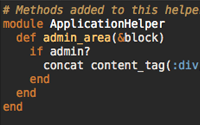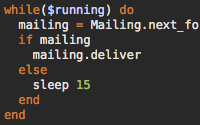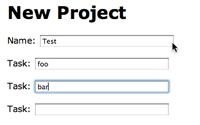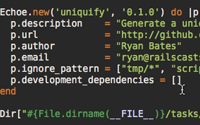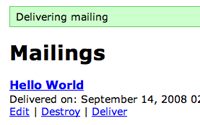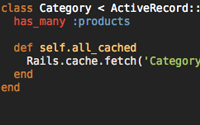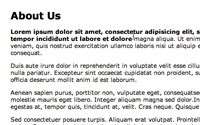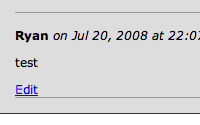Types
- Free Episodes
- Pro Episodes
- Revised Episodes
Categories
- Active Record
- Active Resource
- Active Support
- Administration
- Ajax
- APIs
- Authentication
- Authorization
- Background Jobs
- Caching
- Code Walkthrough
- Controllers
- Debugging
- Deployment
- eCommerce
- Forms
- Mailing
- Models
- Performance
- Plugins
- Production
- Rack
- Rails 2.0
- Rails 2.1
- Rails 2.2
- Rails 2.3
- Rails 3.0
- Rails 3.1
- Rails 3.2
- Rails 4.0
- Refactoring
- Routing
- Search
- Security
- Testing
- Tools
- Views
Rails 2.2 Extras
This episode finishes up the Rails 2.2 series by showing a few miscellaneous additions that I find useful.
(4 minutes)
Memoization
Rails 2.2 is out! In this episode I show how to upgrade Rails and then demonstrate one of the new additions: Memoization.
(5 minutes)
Custom Daemon
Creating a custom daemon to handle background tasks is surprisingly simple. In this episode I will make a daemon to handle dynamically scheduled tasks.
(7 minutes)
Complex Forms Part 1
Complex forms often lead to complex controllers, but that doesn't have to be the case. In this episode see how you can create multiple models through a single form while keeping the controller clean.
(8 minutes)
Making a Gem
Want to create a Ruby Gem instead of a Rails plugin? In this episode I will walk you through creating a gem to extend Rails.
(9 minutes)
Rake in Background
In need of a background process? You may be able to accomplish this with a simple Rake task. See how in this episode.
(10 minutes)
Caching in Rails 2.1
Rails 2.1 brings some new caching features which makes it very easy to cache any values including models. See how in this episode.
(8 minutes)
Capistrano Tasks
Do you know how to make Capistrano tasks? See how to change default deployment behavior with custom tasks in this episode.
(8 minutes)
Semi-Static Pages
Static pages can sometimes be a little awkward to add to a Rails app. See a couple different solutions to this problem in this episode.
(14 minutes)
Session Based Model
If you have a lot of logic associated with the data inside a session, you'll need some central location to put this logic. See how to create a session based model in this episode.
(13 minutes)

